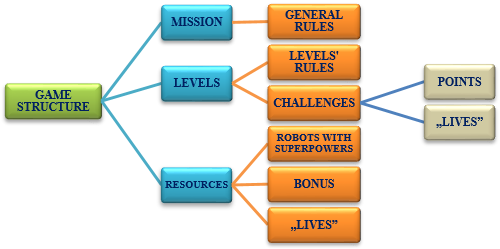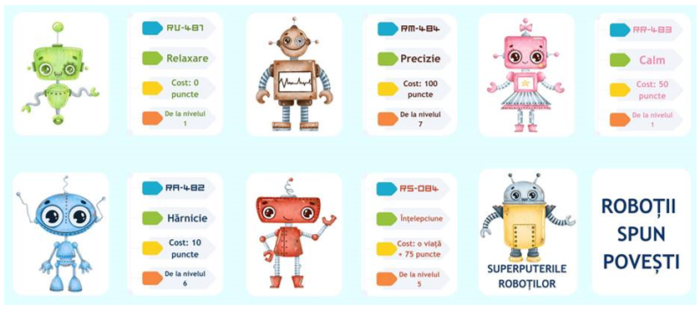During 26 Nov. – 2 Dec. 2022, I participated in the „Robotics and STEAM Education for children with special needs and inclusive classrooms” course, part of the accredited „Connecting, we grow!”, provided by OBO – Interobotics para Humanos SL and funded by Erasmus+, Key Action 1, School Education, through contract no. 2022-1-RO01-KA121-SCH-000064315, in Aviles, Spain and I had the objective of learning the application and the use of both STEAM principles and methods in teaching activities with students with special needs, using robots built from ArTec cubes and encoded with the Studuino app.
Thus, returning from the course, I contributed together with my colleagues to the elaboration of the school curriculum C.S.D. „Robots tell stories” that complies with the structure of a STEAM curricula by concentrically addressing both content domains and learning content. The school syllabus is aimed at students with moderate mental impairment and is thus structured to be taught from preparatory class until the VIII-th grade, being specific for each year of study. For the preparatory class, few content areas and easy learning content are planned, focusing in particular on motor skills and interpersonal relationships. Then the syllabus develops progressively, until the last year of study, not just by broadening the content domains – the introduction of graphic editors, web applications and coding applications – but also by increasing the complexity of learning content.
At the IVth grade level, taking into account the student collective, I chose four content areas for this discipline:

- ArTec cubes – special cubes with one connector and several connecting slots;
- Graphic editors – Canva (using it, the students will edit photos or create greeting cards);
- Web Apps – Piskel (students will learn to create GIFs);
- Coding Apps – ScratchJr (students will learn to customize a character and code it).
For the first content domain, ArTec cubes, although extremely important for motor skills and for the development of automatisms and habits, I determined that the cube connection activities are repetitive and monotonous, and, in the long run, they get boring. Looking for a solution, I realized that everything would be easier and more exciting for students if the classes were carried out employing games. Thus, I have capitalised on the knowledge acquired at another course, „Discover the power of Game-Based Learning and Gamification in education”, all part of the accredited project „Connecting, we grow!”, provided by Erasmus Learning Academy (ELA) and funded by Erasmus+, Key Action 1, School Education, under contract no. 2021-1-IT1-KA121-SCH00007201. Based on it, I started designing the auxiliary notebook, organised on a straightforward game structure:

The mission presents itself as the objective of the game, namely achieving the maximum score. The mission is accompanied by the general rules applied in the „Robots” classes, from the organization of the workspace to the observance of the steps in addressing the challenges of the game and completing the activity.
Levels have their own rules and are organized by challenges whose number differs from one level to another. Challenges are the tasks themselves that students have to perform: building shapes from cubes of different colours, observing a specific order, and the general rule of connection.

Robots with superpowers are chips with different robots that „have” certain skills (superpowers) and help students in solving challenges. Each robot can be used from a certain level and has a price/cost: points and even „lives” accumulated after completing the challenges. I found that in order not to lose points, students are more focused and solve challenges without resorting to help.

Although structured in the form of a game, „Robots” classes align with STEAM educational policies through the interdisciplinarity and even the multidisciplinarity of the activities: students read the rules, count the necessary cubes of each colour and calculate the final score of the level, identify the colours and/or fit them into groups (hot-cold, primary-secondary, etc.); the team spirit of helping the other is encouraged, but also is expressing emotions during or at the end of the activity. In this way, I have ensured that, through the activities I have proposed in this auxiliary workbook, there is a continuity of the notions and skills acquired in other disciplines, achieving my long-term goal of STEAM’s approach to the disciplines taught in the classroom, that is, to prepare my students for the changes that take place permanently in society, both at the scientific level and in terms of technology development.
I believe that this teaching resource has an innovative character not only in the way of approaching the school discipline „Robots tell stories!”, but also by the fact that the basic idea can be adopted by other areas of content from other disciplines, in order to train students in school work, to „keep” them engaged longer and help increase the period of their attention and concentration.

Trebuie să fii autentificat pentru a publica un comentariu.